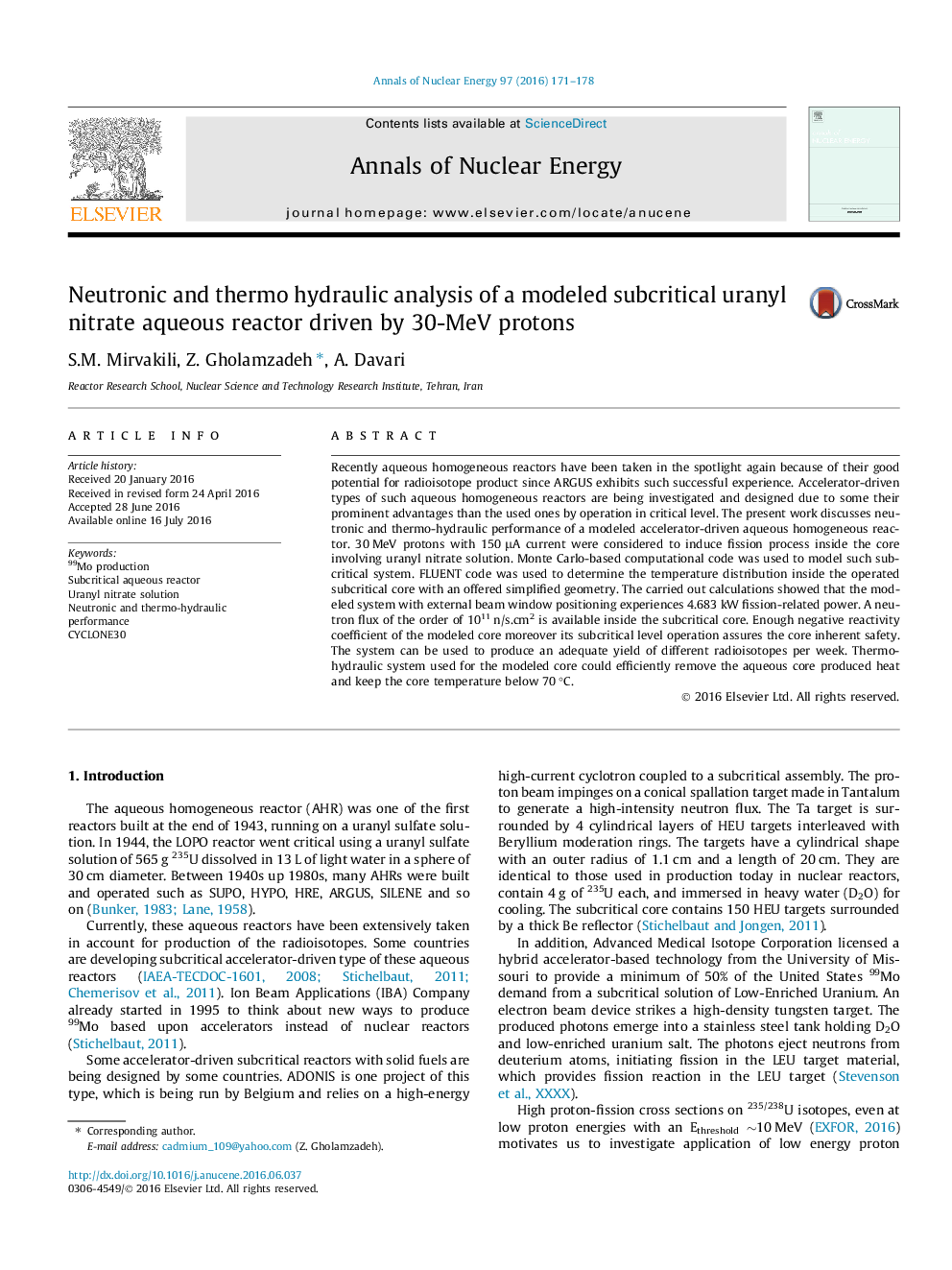| Article ID | Journal | Published Year | Pages | File Type |
|---|---|---|---|---|
| 1728019 | Annals of Nuclear Energy | 2016 | 8 Pages |
•Recently aqueous homogeneous reactors have attracted attention.•Accelerator-driven types of such AHRs are being investigated because of their prominent advantages.•30 MeV protons were considered to drive the subcritical core involving uranyl nitrate solution.•The calculations showed that the modeled system with 4.683 kW power bears less than 70 °C.
Recently aqueous homogeneous reactors have been taken in the spotlight again because of their good potential for radioisotope product since ARGUS exhibits such successful experience. Accelerator-driven types of such aqueous homogeneous reactors are being investigated and designed due to some their prominent advantages than the used ones by operation in critical level. The present work discusses neutronic and thermo-hydraulic performance of a modeled accelerator-driven aqueous homogeneous reactor. 30 MeV protons with 150 μA current were considered to induce fission process inside the core involving uranyl nitrate solution. Monte Carlo-based computational code was used to model such subcritical system. FLUENT code was used to determine the temperature distribution inside the operated subcritical core with an offered simplified geometry. The carried out calculations showed that the modeled system with external beam window positioning experiences 4.683 kW fission-related power. A neutron flux of the order of 1011 n/s.cm2 is available inside the subcritical core. Enough negative reactivity coefficient of the modeled core moreover its subcritical level operation assures the core inherent safety. The system can be used to produce an adequate yield of different radioisotopes per week. Thermo-hydraulic system used for the modeled core could efficiently remove the aqueous core produced heat and keep the core temperature below 70 °C.
